
Dealing with Mud Fever
Mud fever in horses. Every year it’s the same, a combination of wet weather and hair on horses’ legs provides a perfect breeding ground for the bacteria that causes mud fever. White-haired areas and pink skin are more prone to mud fever, so be extra vigilant if your horse ticks these boxes.
In this advice piece, we look at what is mud fever and how you can prevent. Plus we speak to Equine Vet Brian Reed BVMS CertEP MRCVS from Rainbow Equine Hospital for his top advice on how to treat mud fever in horses.
What is mud fever?
The term can be used to refer to a wide range of skin conditions, properly known as pastern dermatitis. It can be caused by a variety of bacteria, which thrive in muddy, wet conditions. The infection can stay dormant in the horse’s skin and only become active when the surface is compromised, usually by prolonged exposure to wet conditions.
If a horse does get mud fever, the signs you may see are quite distinctive and include matted areas of skin containing crusty scabs, with lesions beneath. There is often a thick discharge between the skin and the overlying scab.
You may also notice heat and swelling, with the horse reacting to pressure or flexion of the affected limb. Eventually, hair loss can leave inflamed, raw-looking skin which may split open at the back of the leg in severe cases, creating the horizontal fissures characteristic of cracked heels.
“Before you start treating,” comments Brian, “it’s important to be sure that it is mud fever you’re dealing with. So if your horse hasn’t had it before and you’re unsure, call your vet so you can be certain your horse is receiving the correct treatment.”
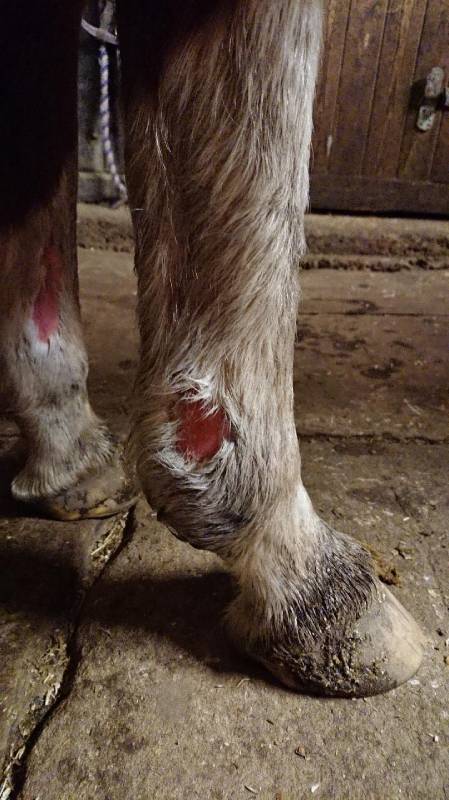
How to prevent Mud Fever
If your horse is prone to mud fever, here's what you can do to help prevent mud fever becoming a problem:
- Keep your horses’ legs as dry as possible
- Check their legs daily for signs of change
- Try to prevent your paddock from getting churned up as bacteria are transmitted in the soil
- Change eating stations and move water troughs, if possible, this can help to reduce muddy patches
- Cover muddy patches with straw or sand
- Use pig oil to help stop the mud from sticking to their legs
- Treat mud fever as early as possible

How can I treat mud fever?
Brian’s key points to remember when dealing with mud fever:
- The earlier you spot any infection the easier and quicker it should be to treat – so check your horse’s legs daily for signs
- Keeping your horse’s legs dry is vital to treating mud fever successfully
- Clipping out feathery legs will make it much easier to treat the problem
- The Protechmasta Silveraid boots can help aid your horse's recovery
- Purple spray can help heal the broken skin
- Removing scabs is key to starting the healing process
- Effective use of a barrier cream prevents further infection and encourages healing
- If in any doubt, call your vet!
To check out the full range of first aid and therapy products available at Harry Hall, click here
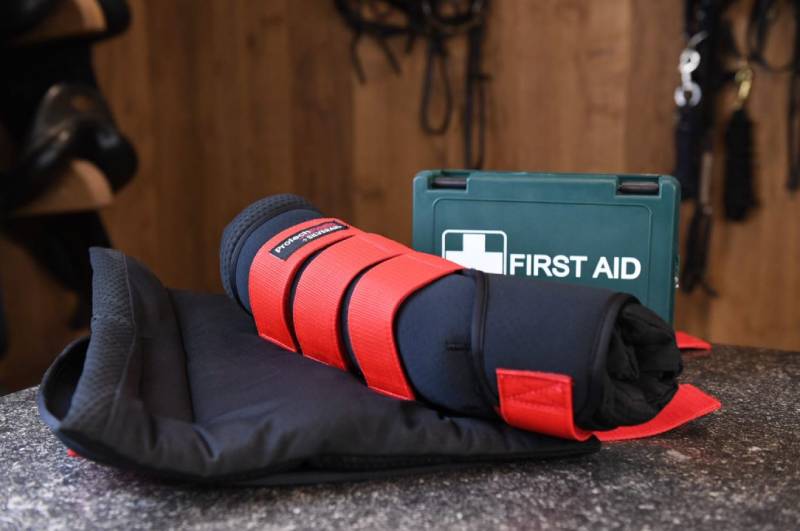
We've even categorised some of our products for wet weather and mud fever treatment, check out our mud fever products.
Find out how the Protechmasta Silveraid leg wraps helped Megan’s horse recover from chronic mud fever
“If you’ve been following my journey over Instagram you will be aware of the mud-fever mayhem we’ve been battling for the past three month. After asking what others have felt worked for them, I opted to try the Protechmasta silveraid leg wraps.
I must admit I was a little sceptical at first, I didn’t know much about how the Protechmasta Infrared and silver ion technology works so I did some research and gave them a try! The improvement, as you can see from the photos, speaks for itself.
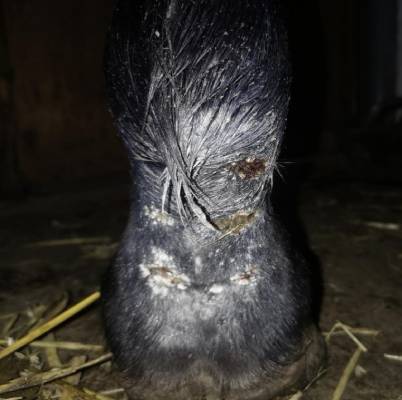
Before Protechmasta Leg wraps use
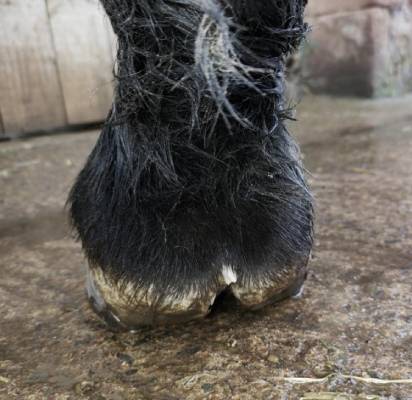
After Protechmasta Leg wraps use
Together they have cleared it right up, and she now doesn't even have a single scab left yet her hinds which were the less affected still have the slight presence of mud fever so the boots must have done something to help!
The boots are so easy to apply, and haven't caused any rubbing or further agitation to the sores either. The fastenings are strong and any dirt is easily brushed off. It’s recommended to wear them overnight and they are indoor boots, as Ariel is turned out 24/7 she wore the boots anytime she was in the stable through the day being fed, tacked up, after exercise etc so I would like to say the results would of been even quicker if she was stabled in them overnight.
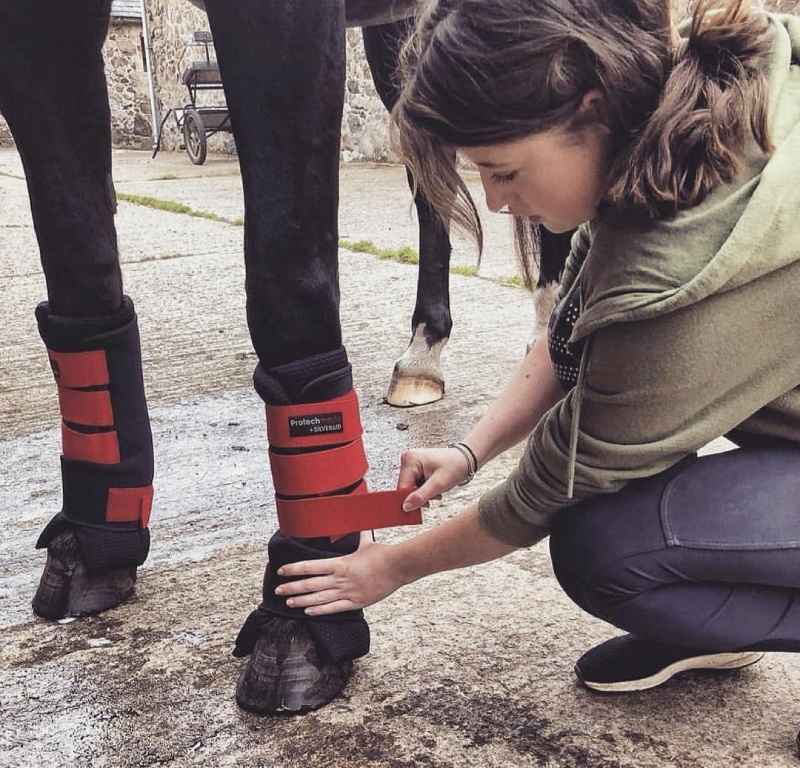
Regular washing is needed, but they wash very well, and it doesn’t weaken their strength or anything like that and I didn’t notice that they were taking the cream away from the sores either, I think they actually helped it stay put!”
About Equine Vet Brian Reed
Brian was brought up in the Scottish Borders in a family with a strong veterinary background - he is the 4th generation to take up the profession. He graduated from Glasgow University Veterinary School in 2003 and after a brief spell working for his father’s practice, he moved to a large farm animal and equine practice on Teesside. Brian moved to Rainbow in 2008 to pursue his passion for equine practice, specifically reproduction, lameness investigation and pre-purchase examinations. Brian gained the RCVS certificate in equine practice in 2010 and became a Director of Rainbow Equine Hospital in 2015. Brian is an FEI Permitted Treating Vet and has provided veterinary services at many national and international Eventing and Dressage competitions. He is also an Official Veterinarian (OV), enabling him to perform equine export examinations and certification. Brian leads the breeding services at Rainbow and enjoys working with performance horses.
Rainbow Equine Hospital is the largest fully equipped RCVS Tier 3 Equine Referral Hospital in the North East of England. Rainbow offers advanced diagnostic and surgical techniques in state-of-the-art facilities and is staffed with progressive specialists in equine soft-tissue and orthopaedic surgery, internal medicine, and diagnostic imaging.
